
In this new era of work culture wherein work-from-home is an option, there’s an upward trend of individuals who are more likely to experience musculoskeletal pain such as hip pain. Exercises for sitting all day can be incredibly beneficial in alleviating this discomfort and promoting better overall health. can be incredibly beneficial in alleviating this discomfort and promoting better overall health. The most common cause of this problem is frequent and prolonged sitting and becoming less engaged in physical activity.
Causes/Conditions
There are negative impacts on the body if you often assume prolonged sitting. Aside from diabetes, heart and vascular diseases, depression, and mortality, you are also prone to acquiring musculoskeletal disorders and hip pain.
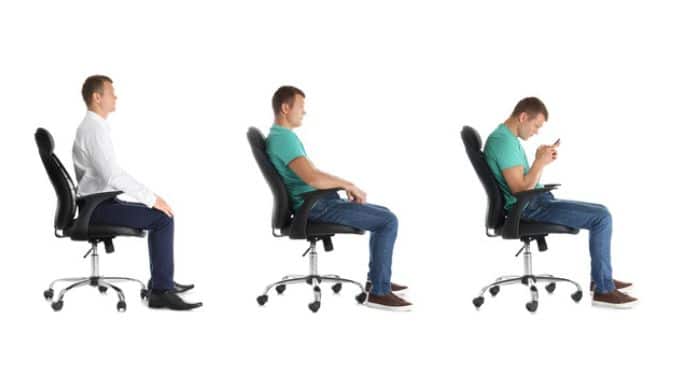
You can have pain in one or both hips when you’re sitting. This is because the hip joint bends and supports most of your body weight when you’re sitting. Add to the fact that muscle imbalances can occur when you assume a slouch position. Those who are confined in chairs for long periods tend to hunch their shoulders and head forward, causing tight muscles and weaker upper-back muscles. The abdominal muscles become weak, while the lower back muscles become tight. Soon, the muscles of the lower extremities, such as your hamstrings and quadriceps, can also contribute to muscle imbalance.
Furthermore, as you develop muscle imbalance, the natural curvature of the spine also shifts, making your line of gravity move forward, making you more prone to feel like you’re going to fall and wobbly.
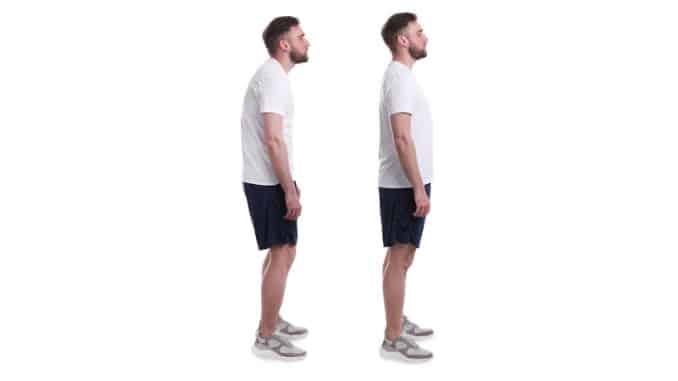
Overall, sitting can lead to deconditioning, muscle fatigue, weakened core stabilizers, and shortening of your hip flexors which can contribute to unnecessary load and stress on your lower back and hip region. Decreased activity and a sedentary lifestyle can also weaken the bones, making you prone to osteoporosis.
Symptoms
The symptoms that you may feel will depend on your underlying condition, but in general, you may notice:
-
- Sharp, stabbing pain or dull ache
- Tenderness
- Stiffness
- Popping or clicking
The location of your pain can also determine what could be the underlying reason behind it.
-
- If you have hip pain or discomfort on the inside of your hip or groin area when you’re sitting, it might be due to a health issue in the hip bones and joints.
- At times, pain in your lower back might be transferred to your hip when you’re sitting. This is called referred pain.
Treatment
The treatment you can do will depend if you have an underlying condition related to your hip pain. However, to prevent acquiring more injury caused by prolonged sitting, it’s best to incorporate stretching exercises to help elongate the muscles of your hips. Stretching the muscles can help correct the muscle imbalance and improve your hip and spinal region.
You can do these simple hip-opening stretching exercises to help you:
1. Standing Lunge
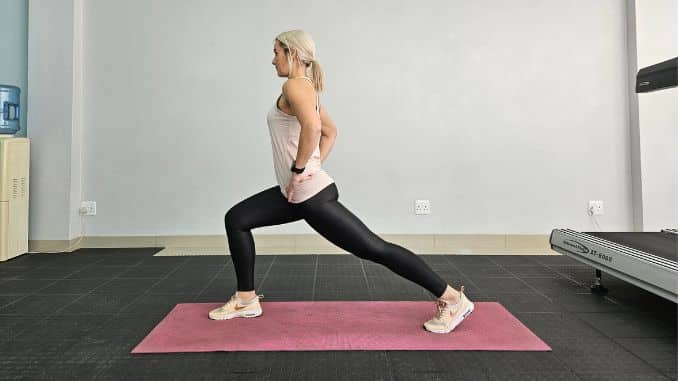
In a standing position, take a step back with your left leg, then knee straight. The front foot is flat, and the leg is slightly bent. Contract the abdominal areas. Contract the glutes and bring the hips forward, targeting the hip flexors. Hold this position for 10 seconds before returning to the original standing position. Repeat the same actions on the opposite leg. Do this for one set of 3 repetitions with 10 seconds of hold per leg.
2. Pigeon Pose
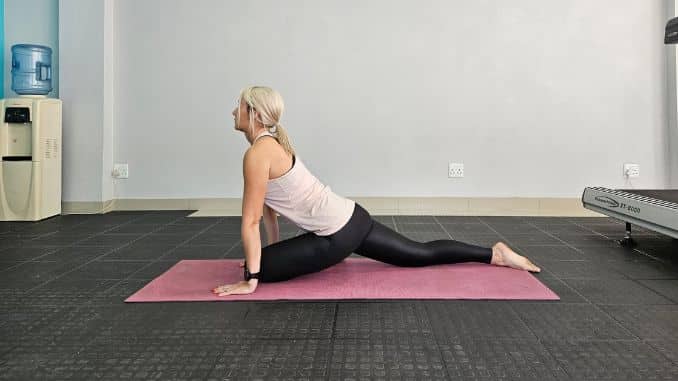
Begin in a four-point position, with your knees below your hips and your hands beneath your shoulders. Bring one knee up and across the opposite side, then lean your upper body against the same leg. Hold the position for a couple of seconds. Return to the starting position and repeat the movement on the opposite side. Do this for one set of 3 repetitions with 30 seconds of hold each.
3. Figure-4 Stretch
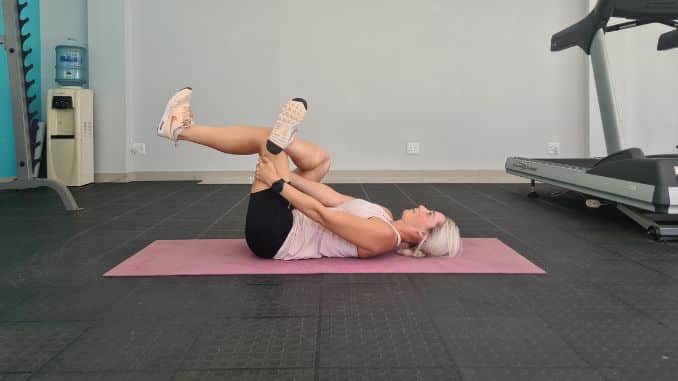
Lie on your back with your knees bent and feet flat on the bed, relaxing the upper body and shoulders. Cross one ankle over the opposite knee, then bring both knees toward you by grabbing the lower leg with your hands. Pull the knees closer to you to intensify the stretch. Hold this position for 15 seconds. Return to the starting position and repeat the movement of the opposite leg. Do this for one set of 3 repetitions with 15 seconds of hold per leg.
4. Happy Baby Pose
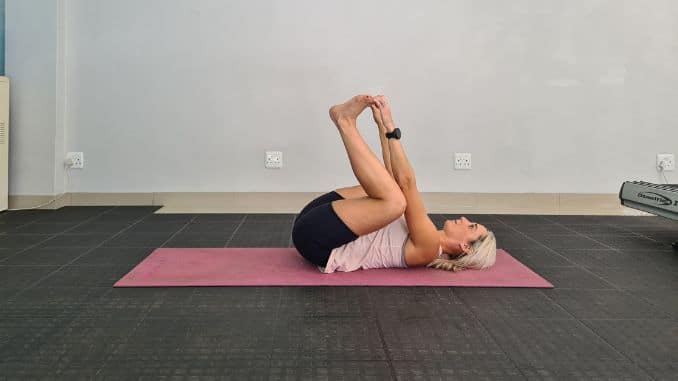
Lie on your back with your knees bent and feet flat on the bed, relaxing your upper body. Lift your legs toward the sky with your toes pointing toward you. Hold the outside of your foot in each hand, gently drawing your toes toward your shoulders while keeping your knees wide apart. Hold this position for a couple of seconds. Take several deep belly breaths, in through your nose and out through your mouth. Relax and repeat the movement.
5. Bridge
Lie on your back on the bed or floor, with your arms either on your chest or at your sides, and relax your upper boy. Bend your knees and flatten your feet on the bed. Engage your core and push from your heels to lift your hips. Hold this position for 20 seconds. Return to the starting position and repeat the movement. Start with one set of 2 repetitions, holding for 20 seconds.
Will I benefit if I use the Unlock Your Hip Flexors?
Definitely! The Unlock Your Hip Flexors program is created for individuals with tight hip flexor muscles that result in pain and limitation of motion of the hips. Incorporating exercises for sitting all day into this program can help address these issues and improve hip flexibility and comfort.
The exercises in this program should be carried out in a sequential flow method. The routines involve slowly releasing one muscle before another to avoid injury and decrease hip tightness. Moreover, the techniques used are a combination of static, dynamic, fascia, and PNF stretch and 3-dimension core stability exercises, mobility exercises, and muscle activation movements. These are all self-administered safely, and we have instructional videos that can guide you throughout the routines.
Also, this program offers modified routines that make the exercises doable. We call these modifications “exercise swaps.” These swaps are designed to specifically cater to those who find the exercises challenging for their current condition.
Outlook
Hip pain due to prolonged sitting can be prevented by assuming a proper sitting position, incorporating stretching exercises, and promoting an active lifestyle. In chronic cases, it’s best to consult your doctor to determine if there’s a possibility of joint damage or muscle injury contributing to your pain.



